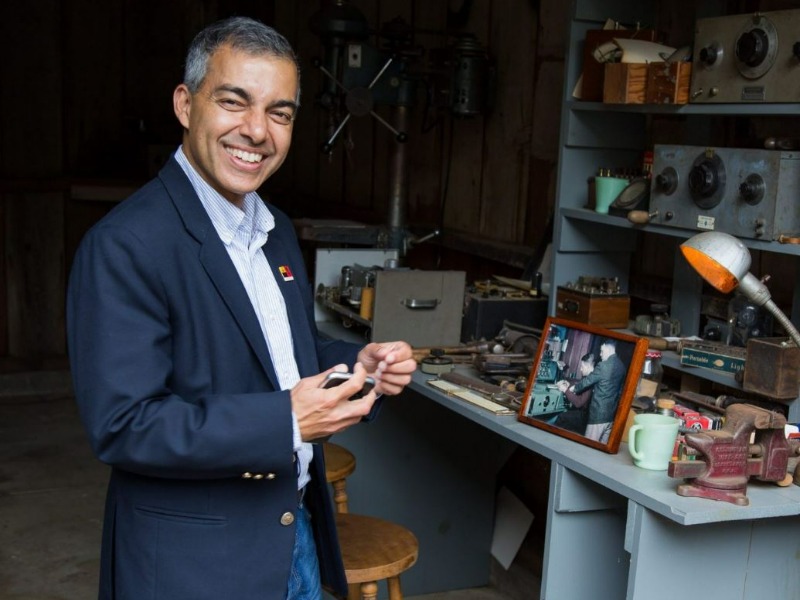Happy Spring and welcome to the March 2025 edition of QURECA’s monthly update! As we embrace the rejuvenating energy of spring, let’s explore the blossoming field of quantum technologies together. This month, we invite you to join us in celebrating the fresh, innovative strides being made in the quantum realm as they begin to transform our everyday lives and the broader technological landscape. Embark on a journey through the latest breakthroughs and insightful developments, where each step forward is a leap towards unlocking the potential of quantum technologies.
Stay curious, stay inspired, and let’s unravel the quantum marvels of 2025 together.
National News
Italy launches sovereign national quantum technology strategy
(Sunday, 2nd March) Italy announced the launch of its National Quantum Technology Strategy, investing €227.4 million to enhance quantum research and industrial capabilities and autonomy within the field. The strategy includes developing national labs, workforce training, and incentivising private investments. Despite lower venture capital investment compared to peers, Italy’s strong academic network and early industry engagement provide a solid foundation for growth.
Read more: https://evrimagaci.org/tpg/italy-launches-ambitious-national-quantum-technology-strategy-245858
(Tuesday, 4th March) Spain’s government will invest €67 million in Multiverse Computing, becoming a shareholder through the Spanish Society for Technological Transformation (SETT). This move aims to advance energy-efficient AI language models, reducing model sizes by up to 90%, lowering energy use and costs. Multiverse, based in San Sebastian, has developed software that compresses AI models, enabling their use on smaller devices like smartphones or even offline.
Read more: https://thequantuminsider.com/2025/03/04/multiverse-computing-announces-a-70-million-investment-from-the-spanish-government/?utm_source=resonance-newsletters.beehiiv.com&utm_medium=referral&utm_campaign=the-quantum-insider-weekly-spain-invests-ibm-ceo-s-quantum-prediction-and-more-news
Finland showcases new national quantum computing capabilities
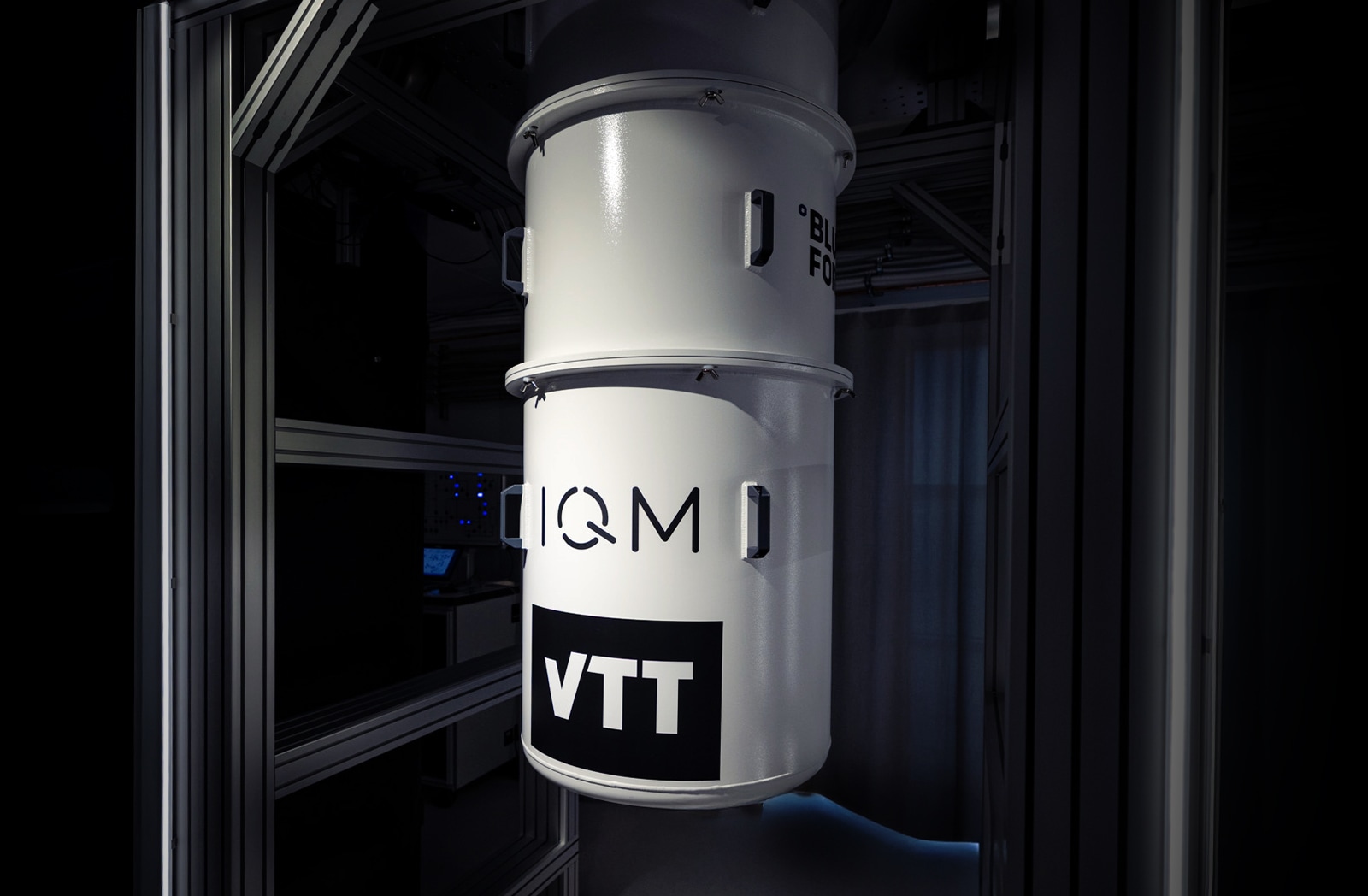
(Tuesday, 4th March) VTT and IQM Quantum Computers launched Europe’s first 50-qubit quantum computer in Finland, concluding a four-year development project. Supported by an investment of €20.7 million, the project began with development of a 5-qubit computer in 2021 which became remotely-accessible in spring 2022, before a 20-qubit upgrade in 2023, culminating in the current 50-qubit system. Located in Espoo, the new Q50 system can be accessed by companies and researchers alike through VTT’s QX quantum computing service.
Read more: https://www.meetiqm.com/newsroom/press-releases/vtt-and-iqm-launch-first-50-qubit-quantum-computer-developed-in-europe
(Thursday, 6th March) Empa, the Swiss Federal Laboratories for Materials Science and Technology, has inaugurated the CarboQuant lab, focusing on carbon-based quantum materials for sustainable technologies. Supported by the Werner Siemens Foundation and the Swiss National Science Foundation, the lab will explore quantum effects in nanographenes for potential use in sensors and quantum computers. Featuring advanced scanning tunnelling microscopes, the lab will manipulate electron spins in nanographenes, aiming to control quantum states for technological applications.
Read more: https://www.empa.ch/web/s604/caboquant-lab-inauguration
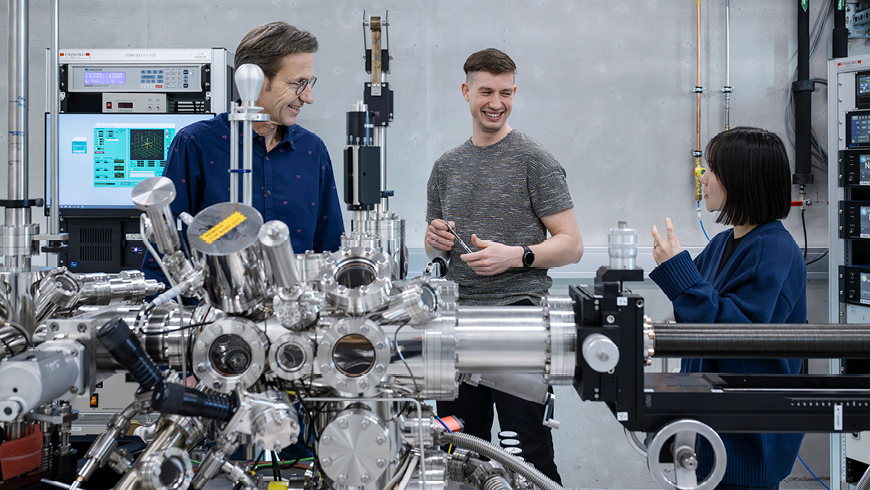
(Thursday, 6th March) The University of Calgary, in partnership with Switzerland’s QAI Ventures, has launched Calgary’s first quantum technology accelerator, Quantum City. This initiative marks QAI Ventures’ expansion into North America, enhancing the quantum innovation ecosystem by connecting European and North American markets. The accelerator will provide startups with access to investors, research institutions, and a global network, fostering cross-border collaborations and innovation in quantum technologies.
Read more: https://ucalgary.ca/news/ucalgary-partners-switzerlands-qai-ventures-launch-calgarys-first-quantum-accelerator
China’s new trillion-yuan tech investment initiative
(Thursday, 6th March) China plans to establish a national venture capital guidance fund which will deploy 1 trillion yuan (approximately USD $138 billion) to support technology startups. This public-private partnership, revealed by Zheng Shanjie of the National Development and Reform Commission, will focus on technologies like AI, quantum technology, and hydrogen energy storage, emphasising long-term investments and high-risk tolerance. No information is yet available on how much may be dedicated to quantum technology research.
Read more: https://www.reuters.com/world/china/china-set-up-national-venture-capital-guidance-fund-state-planner-says-2025-03-06/
(Friday, 7th March) Jij Inc., a quantum optimisation technologies provider, announced the establishment of its first UK subsidiary, marking a significant expansion into the UK quantum technology sector. This move includes joining the UKQuantum initiative, aimed at boosting collaboration and innovation in quantum technologies across the region.
Read more: https://www.j-ij.com/en/news/20250307
(Tuesday, 11th March) Andhra Pradesh, under Chief Minister N. Chandrababu Naidu, plans to establish a ‘Quantum Valley’ to become a leading hub for quantum computing. This initiative aligns with India’s National Quantum Mission and involves setting up a task force. The Quantum Valley aims to propel the state into a first-mover position in quantum technology, similar to its role in the IT revolution of the 1990s. In collaboration with IIT Madras, TCS, and IBM, the project seeks to make Andhra Pradesh a national centre for quantum computing research, attracting top talent and global investments.
Read more: https://www.thehindu.com/news/national/andhra-pradesh/ap-govt-plans-to-create-quantum-valley-says-naidu/article69314794.ece

(Thursday, 13th March) South Korea launched the Quantum Strategy Committee and a dedicated ₩1 trillion Science and Technology Innovation Fund, aiming to strengthen its quantum tech sector by training 2,500 researchers and developing quantum computing and cryptography. Despite allocating ₩20 billion annually to quantum startups, experts criticise the investment as insufficient compared to the U.S., China, and the U.K., urging for more significant funding to enhance global competitiveness and industrialisation in quantum technologies.
Read more: https://thequantuminsider.com/2025/03/13/south-korea-launches-quantum-strategy-comittee-allocates-15m-annually-for-quantum-startups-but-some-warn-it-falls-short/
(Friday, 14th March) Natural Sciences and Engineering Research Council of Canada (NSERC) and the National Research Council Canada / Conseil national de recherches Canada are providing over CA$11 million in funding to support six collaborative research projects aimed at advancing the industrial readiness of quantum sensing technologies. The funding will also enhance research, talent development, and commercialisation efforts, involving partnerships between universities, SMEs, and other sectors. Read more: https://nrc.canada.ca/en/stories/nserc-nrc-announce-funding-advance-industrial-readiness-quantum-sensing-technologies
(Monday, 31st March) QuintessenceLabs secured a AU$15 million investment from the National Reconstruction Fund Corporation, contributing to a AU$20 million funding round.
Read more: https://www.innovationaus.com/quantum-outfit-quintessencelabs-lands-15m-nrf-boost/
Quantum Sensing
(Thursday, 6th March) Oxford Instruments introduced TeslatronPT Plus, a low-temperature superconducting magnet measurement system that enhances flexibility and performance in material physics research. This open-architecture system allows easy integration and scaling, supported by non-proprietary software and a browser interface for remote control. It’s designed to improve user efficiency in setup and measurement, offering tools like Python environment for customization and real-time data visualisation.
Read more: https://www.oxinst.com/news/oxford-instruments-introduces-teslatronpt-plus/?sbms=nanoscience
(Tuesday, 25th March) Researchers at Diraq have been awarded the Quandarum project by the US Department of Energy (DOE) Office of Science, in collaboration with Fermilab. This project supports their research into dark matter, aiming to deepen understanding of the universe’s fundamental workings through advanced quantum technology.
Read more: https://diraq.com/newsdesk/our-quantum-technology-shines-a-light-on-the-search-for-dark-matter
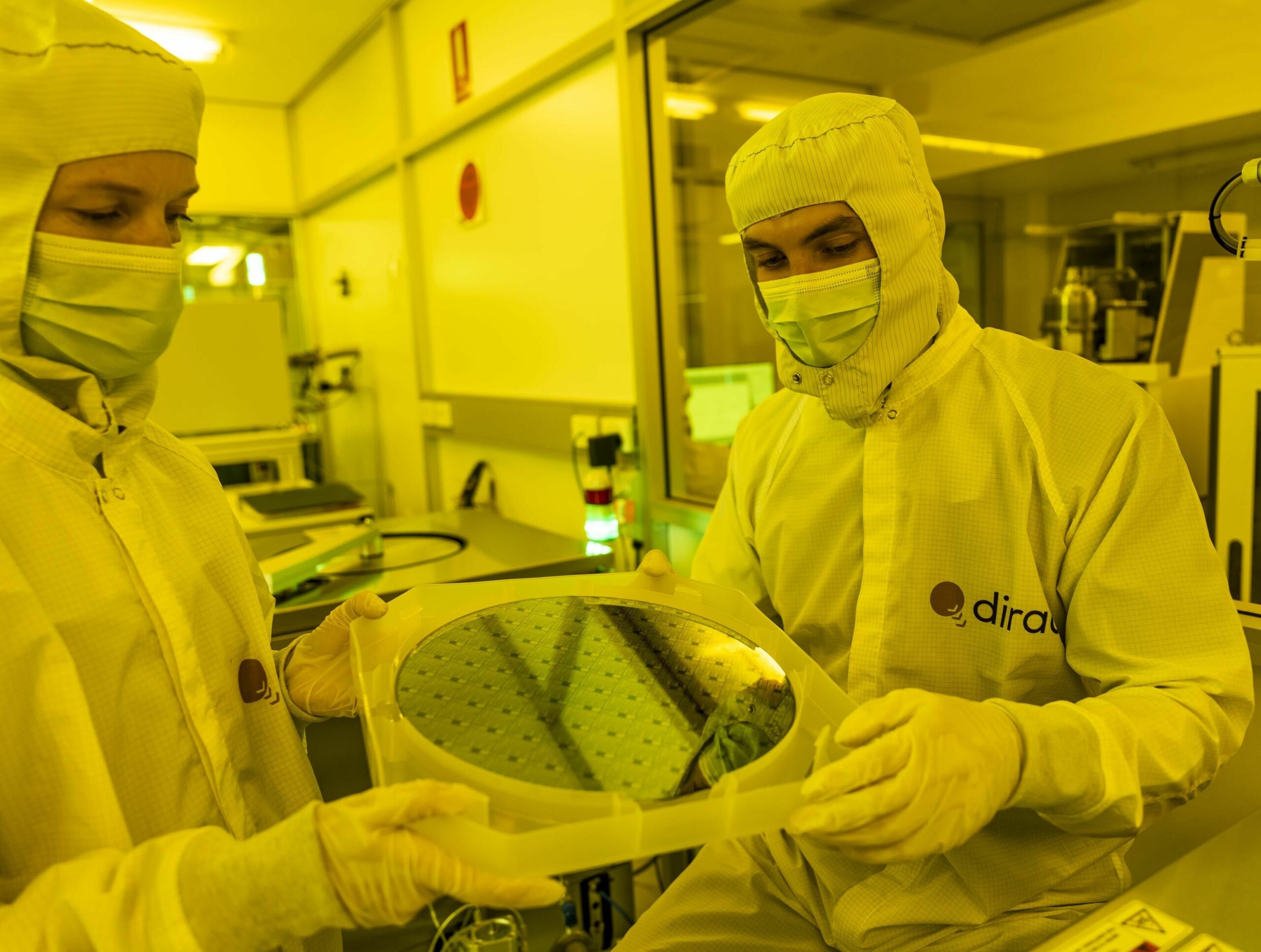
(Monday, 31st March) DeteQt, a Sydney-based quantum sensing startup, secured pre-seed funding to develop diamond-on-silicon quantum sensors. Spun out from the University of Sydney Nano Institute, DeteQt’s unique technology aims to realise scalable real-world applications through its quantum-semiconductor synergy. This initiative is supported by both Australian and U.S. partners.
Read more: https://www.sydney.edu.au/news-opinion/news/2025/03/31/sydney-spinout-deteqt-secures-backing-for-diamond-on-silicon-sen.html
Quantum Computing
(Monday, 3rd March) QunaSys has secured a DKK 19 million grant from Innovation Fund Denmark for the HyperTenQ project. This project, in collaboration with the University of Copenhagen and the Novo Nordisk Foundation Quantum Computing Programme, will optimise quantum algorithms for chemical simulations, develop software for photonic quantum computers, and create scalable quantum computing frameworks for applications in pharmaceuticals, energy, and materials science.
Read more: https://qunasys.com/en/news/posts/hypertenq/
(Monday, 3rd March) Researchers from the Aalborg University, Brodersen Systems, and University of Valladolid published findings in Nature’s Scientific Reports on power load forecasting using a hybrid quantum/classical neural network for applications in quantum-enhanced artificial intelligence. This approach, which does not rely on additional data like weather conditions, uses historical and current load data to predict future load values. The study tests this method on various types of loads, demonstrating the potential of quantum AI in addressing complex challenges in smart grids, enhancing prediction accuracy and efficiency in energy management.
Read more: https://www.nature.com/articles/s41598-025-89933-x#author-information
(Tuesday, 4th March) IonQ has commissioned a groundbreaking quantum system at the U.S. Air Force Research Laboratory (AFRL) in Rome, New York. This system, based on trapped ion technology, is designed to enhance quantum networking and computing capabilities for national security and research purposes. The deployment of this system marks a significant advancement in the partnership between IonQ and the U.S. government, emphasising the strategic importance of quantum technologies in addressing complex challenges in national defence and other critical areas.
Read more: https://ionq.com/news/ionq-commissions-ground-breaking-quantum-system-at-the-u-s-air-force
(Tuesday, 4th March) Nanofiber Quantum Technologies (NQT) announced its recent findings of cavity quantum electrodynamics (QED) within nanofibers for applications in quantum computing. The technique involves manipulating quantum states through nanofiber-coupled cavities, which promises to enhance quantum gate operations.
Read more: https://www.nano-qt.com/news/20250304001EN
(Wednesday, 5th March) IonQ, in collaboration with Australian National University, announced faster and higher-fidelity quantum gates for trapped-ion quantum computing in recent findings. The new technique involves ultrafast state-dependent kicks from nanosecond laser pulses, which enable quantum logic gates to operate at much faster megahertz speeds. This development not only speeds up generation of entanglement but also reduces errors and enhances network accuracy, critical for practical scalability in quantum computing applications
Read more: https://ionq.com/news/ionq-reaches-important-milestone-in-achieving-faster-quantum-gates-for?utm_source=linkedin&utm_medium=social&utm_campaign=Gate-Speed&utm_content=press-release&utm_term=45717
(Wednesday, 5th March) KDDI, KDDI Research, Jij, QunaSys, and Waseda University have partnered to develop an AI-Quantum Business Platform, aiming to integrate AI with quantum computing for broader real-world applications and commercialisation. This platform will allow non-experts easy access to quantum resources through a user-friendly interface, focusing on optimisation and quantum chemistry applications across various industries such as telecommunications, logistics, manufacturing, and renewable energy materials development. The initiative aligns with Japan’s Strategic Innovation Promotion Program and collaborates with AIST’s hybrid quantum-AI testbed and European quantum efforts. The original announcement was made in Japanese, though The Quantum Insider have translated to English. Read more here: https://thequantuminsider.com/2025/03/05/kddi-kddi-research-jij-qunasys-and-waseda-university-form-partnership-to-build-ai-quantum-computing-infrastructure/?utm_source=resonance-newsletters.beehiiv.com&utm_medium=referral&utm_campaign=the-daily-qubit-qnns-for-energy-demand-mixed-species-quantum-logic-gates-space-based-qkd-and-more
(Wednesday, 5th March) NQT also announced the opening of a new office in College Park, Maryland, to enhance its US R&D and commercialisation efforts. The expansion is supported by a partnership with the Quantum Startup Foundry and funding from Maryland’s Global Gateway Program. NanoQT is collaborating with Professor Mario Dagenais at the University of Maryland to develop CMOS-compatible Photonic Integrated Circuits for cavity QED systems, funded by the MIPS program.
Read more: https://www.nano-qt.com/news/20250305001EN
(Tuesday, 11th March) Researchers at University of Isfahan reported exploration of the quantum speed limit time in two-qubit systems using dynamical decoupling to manage decoherence. It finds that periodic dynamical decoupling can effectively mitigate dephasing effects, preserving quantum coherence which may provide support to future more robust quantum technologies.
Read more: https://www.nature.com/articles/s41598-025-93348-z#Abs1
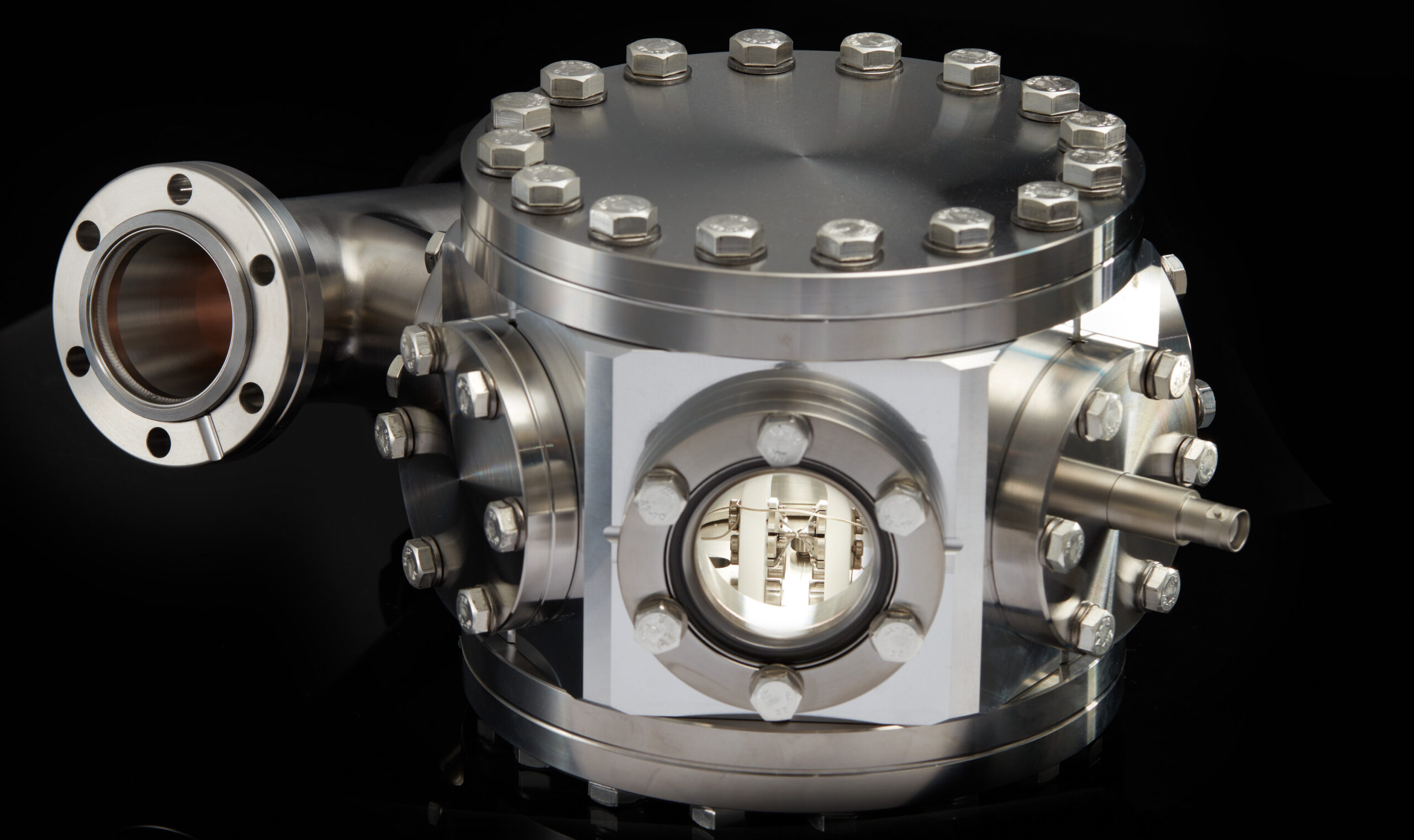
(Tuesday, 11th March) Nu Quantum, in collaboration with the University of Sussex, Cisco, and Infineon, is leading Project HyperIon. Funded by Innovate UK, the project focuses on scaling trapped ion quantum computers through Nu Quantum’s Qubit-Photon Interface technology, a node connection interface. The project aims to integrate advanced ion-trap technology and high-volume manufacturing techniques to develop scalable, commercial Quantum Processing Units.
Read more: https://www.nu-quantum.com/news/hyperion-nu-quantum-partners-with-the-university-of-sussex-cisco-and-infineon-to-scale-trapped-ion-quantum-computers
(Wednesday, 12th March) UC Riverside received a $4 million grant to explore antiferromagnetic spintronics for advanced computing and memory. This technology, utilising antiferromagnetic materials, offers faster, denser, and more energy-efficient memory systems compared to traditional ferromagnetic spintronics. The three-year project will involve collaboration with other UC campuses and national labs, focusing on both theoretical and practical aspects of antiferromagnetic materials, which promise significant advancements in microelectronics.
Read more: https://news.ucr.edu/articles/2025/03/12/advancing-antiferromagnetic-spintronics-next-gen-memory-and-computing

(Wednesday, 12th March) QuamCore recently broke out with $9 million in seed funding, announcing its ambitious plan to build the world’s first scalable quantum computer capable of supporting 1 million qubits within a single cryostat. This technology could drastically reduce the physical space and complexity associated with current quantum systems, which require large, interconnected facilities. QuamCore’s innovative approach simplifies the infrastructure needed for large-scale quantum computing through efficient minimising of cabling requirements.
Read more: https://thequantuminsider.com/2025/03/12/quamcore-emerges-from-stealth-with-9-million-in-seed-funding-to-build-worlds-first-scalable-1-million-qubit-quantum-computer/
(Wednesday, 12th March) D-Wave demonstrated quantum supremacy on a practical problem, a first in the industry. Their annealing quantum computer performed a magnetic materials simulation, a task that would take classical supercomputers about a million years and enormous energy. This breakthrough, achieved with the Advantage2 system, proves D-Wave’s quantum technology can solve complex real-world problems far more efficiently than traditional computing methods. This achievement was detailed in a peer-reviewed paper in the journal Science.
Read more: https://www.dwavequantum.com/company/newsroom/press-release/beyond-classical-d-wave-first-to-demonstrate-quantum-supremacy-on-useful-real-world-problem/
(Monday, 17th March) The EuroQCS-France consortium announced that European researchers will soon be able to access a 12-qubit photonic quantum computer from Quandela ahead of their Lucy system’s anticipated deployment at CEA’s computing facility. Users will also benefit from expert support and specialised HPC-QC training.
Read more: https://www.quandela.com/about-us/newsroom/euroqcs-france-remote-access-to-a-12-qubit-quandela-system-is-now-available-for-european-users/
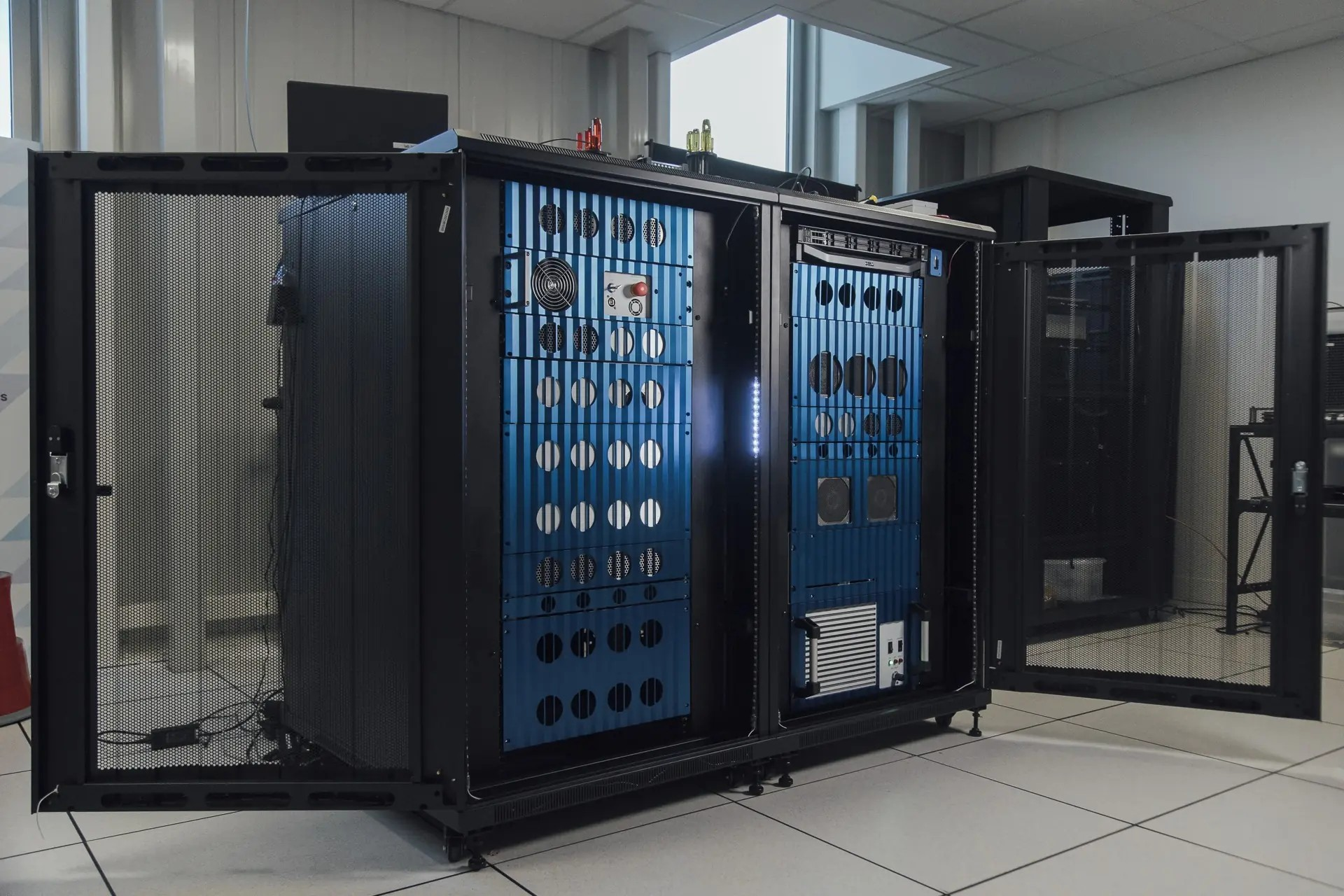
(Monday, 17th March) Pasqal partnered with Microsoft Azure Quantum to expand access to its neutral-atom quantum computers via the cloud.
Read more: https://www.pasqal.com/news/pasqal-expands-access-to-quantum-computing-capabilities/
(Tuesday, 18th March) NVIDIA announced plans to establish the NVIDIA Accelerated Quantum Research Center (NVAQC) in Boston to advance quantum computing by integrating quantum hardware with AI supercomputers, aiming to address challenges like qubit noise and enhance practical quantum processors. Collaborators include quantum computing innovators such as Quantinuum, Quantum Machines, and QuEra Computing, along with academic institutions like the Harvard Quantum Initiative and MIT’s Engineering Quantum Systems group. The centre will utilise NVIDIA’s GB200 NVL72 systems and the CUDA-Q quantum development platform to develop hybrid quantum-classical algorithms and applications.
Read more: https://nvidianews.nvidia.com/news/nvidia-to-build-accelerated-quantum-computing-research-center
(Tuesday, 18th March) Oxford Ionics welcomed over 100 guests to the grand opening of its new 30,000 square foot global HQ in Oxford.
Read more: https://www.oxionics.com/announcements/uk-science-minister-opens-oxford-ionics-hq
(Wednesday, 19th March) Quantum Circuits and NVIDIA partnered to enhance quantum programming development capabilities. It focuses on several features: error awareness via detection and real-time control, improved compilation and simulation efficiencies, and development of hybrid quantum-classical algorithms.
Read more: https://quantumcircuits.com/key-partnership-with-nvidia/
(Wednesday, 19th March) Welinq announced the launch of the first commercial quantum memory system designed for distributed quantum computing centres and large-scale secure networks. The compact, neutral-atom-based system operates at room temperature and claims world record performance for quantum memory systems.
Read more: https://welinq.notion.site/Welinq-Launches-Its-World-Record-Storage-Solution-for-Quantum-Computing-Scale-Out-1b497107255580d8b2e6c53f03f61057
(Thursday, 20th March) SEEQC developed the first digital interface to connect quantum processors with GPUs, utilising its Single Flux Quantum technology. This interface, demonstrated with an Nvidia GPU, aims to enable real-time quantum error correction by reducing latency to microseconds and overcoming bandwidth limitations.
Read more: https://www.eenewseurope.com/en/seeqc-builds-first-quantum-gpu-interface/
(Thursday, 20th March) IQM introduced their Noise-Robust Estimation approach in quantum error mitigation. NRE has shown superior performance in experiments, providing near bias-free results and significantly reducing bias errors compared to other methods, even in noisy quantum environments. Read more: https://www.meetiqm.com/newsroom/blog/noise-robust-estimation-nre-a-novel-approach-in-quantum-error-mitigation
(Friday, 21st March) MIT researchers have developed a new “interconnect” system that allows direct communication among multiple quantum processors, providing efficient, on-demand photon shuttling between processors remote entanglement. Read more: https://news.mit.edu/2025/device-enables-direct-communication-among-multiple-quantum-processors-0321?utm_source=substack&utm_medium=email

(Friday, 21st March) University of Oxford research group, led by Oxford Quantum Circuit’s CSO, announced a significant improvement in two-qubit gate speed and performance, with their new superconducting circuit design, achieving 99.8% fidelity in 25 nanoseconds. Read more: https://oqc.tech/company/newsroom/oxford-research-group-demonstrate-fundamental-speed-up-of-two-qubit-gate
(Monday, 24th March) Fujitsu and QuTech successfully achieved a universal quantum gate set for diamond spin qubits with a sub-0.1% error probability. Competitive among the highest fidelities across quantum computing, it leverages high-purity diamonds and advanced measurement techniques to minimise environmental noise. Read more: https://www.fujitsu.com/global/about/resources/news/press-releases/2025/0324-02.html
(Tuesday, 25th March) Classiq working with Sumitomo Corporation and Mizuho-DL Financial Technology reported significant findings from their recent testing, compressing quantum circuits by up to 95% for Monte Carlo simulations in finance.
Read more: https://www.classiq.io/insights/classiq-powers-quantum-breakthrough-with-sumitomo-corporation-and-mizuho-dl-financial-technology
(Thursday, 27th March) Pasqal secured a contract to provide EuroQCS-Italy, a quantum computer, as part of the EuroHPC JU initiative, and will be hosted in Italy by CINECA. The new system will initially operate with 140 qubits and will be upgraded to a hybrid model in 2027 to support more complex quantum algorithms. The system is aimed at advancing European capabilities in scientific and industrial sectors by utilising quantum computing for various applications.
Read more: https://www.pasqal.com/newsroom/pasqal-selected-to-deliver-new-quantum-computer/
(Monday, 31st March) Concluding a partnership we reported on many moons ago, Japan Tobacco and D-Wave have successfully used a quantum-hybrid workflow to enhance AI’s capabilities in drug discovery, outperforming classical LLM training results. Their collaboration leveraged D-Wave’s quantum annealing technology to generate more viable and ‘drug-like’ molecular structures, signposting the potential to significantly advance pharmaceutical development through quantum computing by improving both the speed and quality of the drug discovery process.
Read more: https://www.dwavequantum.com/company/newsroom/press-release/japan-tobacco-and-d-wave-announce-quantum-proof-of-concept-outperforms-classical-results-for-llm-training-in-drug-discovery/
Quantum Communication and Security
(Monday, 3rd March) The PQC4eMRTD project, funded by the European Union, has been officially launched and aims to enhance the security of electronic machine-readable travel documents (eMRTDs) like passports against quantum computing threats. Starting on February 28th, 2025, this two-year initiative focuses on developing and promoting quantum-resistant cryptographic standards. With quantum computing expected to grow significantly, posing risks to traditional cryptography, this project is crucial for protecting sensitive data in travel documents. Coordinated by Germany’s Infineon Technologies and including partners like Thales and CryptoNext Security from France, it seeks to influence international standards for post-quantum cryptography and foster collaboration across sectors. This European effort underscores the urgent need for a transition to secure systems that can withstand emerging quantum threats.
Read more: https://thequantuminsider.com/2025/03/03/thales-infineon-technologies-and-others-join-eu-project-to-standardize-quantum-resistant-protocols-for-secure-travel-documents/?utm_source=resonance-newsletters.beehiiv.com&utm_medium=referral&utm_campaign=the-daily-qubit-qnns-for-energy-demand-mixed-species-quantum-logic-gates-space-based-qkd-and-more

(Tuesday, 4th March) Madrid’s MadQuantum-CM project, funded by a €73 million investment from the European Union and regional sources, aims to advance quantum-safe communications. Led by IMDEA Networks, Telefónica, and Universidad Carlos III, the project focuses on developing secure quantum key distribution protocols over Telefónica’s fiber network. It seeks to integrate QKD into conventional networks, enhance security, and train specialists.
Read more: https://networks.imdea.org/madrid-leads-the-development-of-quantum-safe-communications-through-the-madquantum-cm-project/
(Tuesday, 11th March) NIST has chosen the fifth algorithm post-quantum cryptographic algorithm for its assured Post-Quantum Encryption standardisation – HQC (Hamming Quasi-Cyclic) – as a backup quantum-resistant encryption algorithm alongside ML-KEM to offer dual protection against quantum threats. HQC, leveraging error-correcting codes, differs from ML-KEM’s structured lattices approach, providing an alternative in case ML-KEM is breached. NIST intends to release a draft HQC standard in 2026 for public feedback, aiming for finalization in 2027. Meanwhile, organizations are encouraged to adopt the 2024 standards. Last year, NIST standardised several encryption algorithms, including ML-KEM, to secure data against potential future quantum computer attacks, addressing general encryption needs like internet traffic and stored data protection. HQC, demanding more computing resources, is selected for its robust security features, although it will not replace ML-KEM but serve as a supplementary option. This selection is part of NIST’s ongoing efforts since 2016 to prepare for quantum computing challenges, ensuring a comprehensive defence strategy through diversified mathematical foundations.
Read more: https://thequantuminsider.com/2025/03/11/nist-selects-hqc-as-fifth-algorithm-for-post-quantum-encryption/
Quantum Internet Alliance release first operating system for quantum networks
(Wednesday, 12th March) The Quantum Internet Alliance announced the development of QNodeOS, the first operating system for quantum networks. QNodeOS facilitates programming and operation across diverse quantum hardware, supporting both trapped ion processors and colour-centre systems, removing the need for system-specific coding and allowing developers broader experimentation and application development in quantum networking.
Read more: https://thequantuminsider.com/2025/03/12/quantum-internet-alliance-announces-qnodeos-the-first-operating-system-for-quantum-networks/
Access the Nature paper: https://www.nature.com/articles/s41586-025-08704-w
(Thursday, 13th March) China claims successful establishment of a 12,800km satellite-based quantum key distribution communication link with South Africa to prevent eavesdropping, aiming for a hacker-proof network, a first of its kind in the global southern hemisphere. A paper was expected in mid-March though has not yet been released.
Read more: https://amp-scmp-com.cdn.ampproject.org/c/s/amp.scmp.com/news/china/science/article/3302234/china-creates-hacker-proof-quantum-satellite-communication-link-south-africa
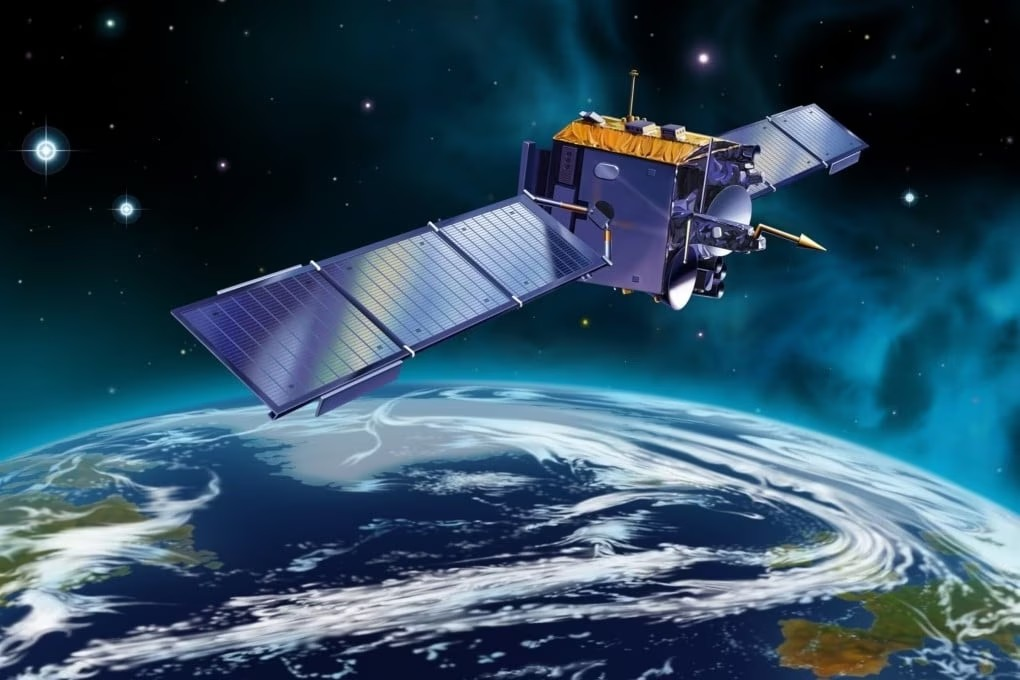
(Wednesday, 26th March) JPMorgan Chase, in collaboration with Quantinuum, Argonne National Laboratory, and Oak Ridge National Laboratory, reported the realisation of Certified Quantum Randomness. This accomplishment transforms the theoretical concept of generating verifiable random numbers into practical application, crucial for enhancing encryption and security protocols. Certified Randomness ensures that sequences of numbers are genuinely random and verifiable, addressing a fundamental challenge in cryptography.
Read more: https://www.jpmorgan.com/technology/news/certified-randomness
(Thursday, 27th March) Unisys has launched a Post-Quantum Cryptography service to help organisations prepare for future quantum computing threats. The initial offering is a cryptographic posture assessment that inventories and analyses an organisation’s cryptographic environment to identify vulnerabilities and recommend improvements. Unisys plans to expand its PQC services to include strategy consulting, infrastructure modernisation, and crypto-agility solutions, enabling organisations to transition to quantum-resistant algorithms and maintain robust security as quantum technologies evolve. This proactive approach addresses the risk of “harvest now, decrypt later” attacks, where encrypted data is stolen today for future decryption using quantum computers. Much like QURECA, Unisys emphasises the urgency for organisations to begin adapting their cybersecurity strategies now to protect sensitive data against emerging quantum threats.
Read more: https://www.unisys.com/news-release/unisys-launches-first-post-quantum-cryptography-service-to-block-future-security-threats/
(Friday, 28th March) Luxembourg-based, SES, and Singapore-based startup, SpeQtral, have signed a Memorandum of Understanding to advance quantum-secure communications globally. They plan to develop an Optical Ground Station in Singapore, enhancing satellite-based Quantum Key Distribution between Asia and Europe. This collaboration aims to reduce costs, improve quantum communication infrastructure, and foster global adoption, strengthening long-distance cybersecurity services.

Check out our other channels!
These are some of this month’s news updates that didn’t make it into in our weekly news on LinkedIn. Give QURECA’s LinkedIn page a follow for more frequent weekly updates from the world of quantum technologies! Don’t forget our other socials, including Instagram, X (Twitter) and YouTube, and feel free to contact us directly through our website, for all the latest in quantum technologies.
See you in the next monthly update!

